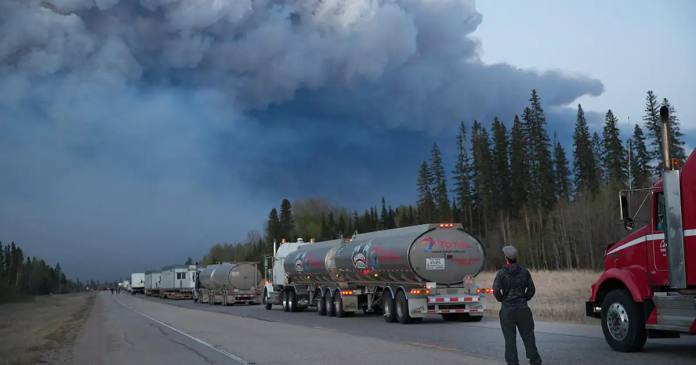Western Canada is currently experiencing a series of major wildfires that have prompted the evacuation of thousands and pose significant risks to roads and transportation. In Alberta, a wildfire covering 210 square kilometers has forced over 6,600 residents south of Fort McMurray to evacuate. Regional Fire Chief Jody Butz reassures that the current response measures are robust, and that the fire contains less fuel than previous ones. Key routes such as highways 63 and 881 are closely monitored due to their proximity to the fire.
Edmonton Alert and Weather Forecast
In Edmonton, the evacuation center remains active, showing solidarity with those affected. Meteorologically, small amounts of rain have been recorded, but these are unlikely to significantly impact the situation. Authorities are vigilant, with particular attention to weather conditions which, exacerbated by the El Niño phenomenon, could worsen the wildfire situation.
Critical Situation in British Columbia
British Columbia also faces worrying conditions, with ongoing evacuations around Fort Nelson due to the Parker Lake and Patry Creek fires. The latter, covering 464 square kilometers, has been intensified by strong winds. Weather conditions remain abnormally hot and dry, increasing the risk of fire spread.
Impact on Trucking Operations
The trucking sector faces multiple risks. Road closures and detours could significantly hinder logistics operations, necessitating proactive planning. Oil companies like Suncor, MEG, and Cenovus, though not directly affected at the moment, remain on alert with their employees among the evacuees. Ensuring the safety of employees involved in transport operations is a top priority.
Situation in Quebec
In Quebec, authorities are on alert for a potentially more active wildfire season, especially in the western part of the province. The El Niño phenomenon and current climatic conditions, marked by temperatures above seasonal norms and low precipitation, increase the risk of fires. In March and April, the Quebec Forest Fire Prevention Society (SOPFEU) already noted an increase in fires compared to the previous year, with the majority being human-caused. This trend raises concerns about the possibility of large-scale fires caused by lightning and drought, highlighting the need for communities and businesses, including the trucking sector, to remain vigilant and well-prepared for this potentially challenging fire season.
Long-Term Implications and Precautions
Trends indicate a potentially active and intense wildfire season in Canada, with extensive impacts on transportation and logistics. Authorities recommend heightened vigilance, particularly for activities that could trigger fires. Cooperation among firefighting services, transportation authorities, and trucking companies is essential to minimize disruptions and ensure everyone’s safety.
Advice for Transporters
Transporters are advised to stay informed of local alerts, plan alternative routes, and prepare contingency plans. Adhering to the recommendations of authorities can contribute to an effective response to this recurring and unpredictable threat.
Conclusion
As the wildfire season begins, caution and preparation are the best allies for the trucking sector facing these natural disasters. The solidarity and resilience of all stakeholders will be essential in navigating this evolving situation.
To check the status of the road network in a region, visit the 511 site of the concerned province, which offers updates and provides important information on road conditions and closures.
*Thanks to Nathalie for bringing this situation to our attention. Do you have information to submit? Write to [email protected]
















